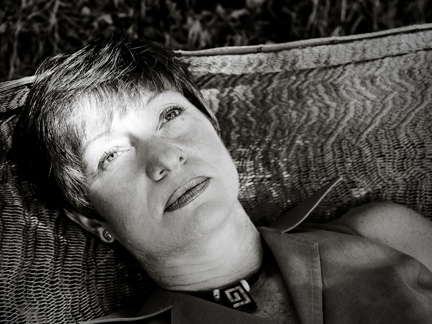 When astronomer Isabel Hawkins was growing up in Argentina, an encyclopedia salesman showed up at the door one day with an illustrated book about the planets.
When astronomer Isabel Hawkins was growing up in Argentina, an encyclopedia salesman showed up at the door one day with an illustrated book about the planets.
“There was this one picture of Jupiter” says Isabel, “floating in the blackness of space. It was that image, of this mysterious planet, this exotic world surrounded in blackness, that made me want to understand what it was all about.”
Isabel didn’t just look at stars and planets in books. At a ranch outside of Cordoba (her hometown), she would lay out in the fields at night, watching for shooting stars. She was in the southern hemisphere, so she could also see the Magellanic Clouds, “two irregular galaxies that are companions to our own.” At first she thought they were actual clouds, but they didn’t move, and they appeared night after night in the same spot. It was that mystery–and the image of Jupiter–that got her “hooked on the idea of even considering astronomy as a career.”
Total eclipse of the sun
 Hawkins saw her first live solar eclipse on March 29, 2006, in Turkey. “I had never seen a total solar eclipse, though I had seen many pictures of it, and I’d seen live webcasts and video.”
Hawkins saw her first live solar eclipse on March 29, 2006, in Turkey. “I had never seen a total solar eclipse, though I had seen many pictures of it, and I’d seen live webcasts and video.”
“But nothing prepares you for being there. It’s not just the image of the moon covering the sun and seeing the corona. It’s the entire context, and being able to share that moment with a bunch of other people. You felt the dynamic movement of the moon, the sun, and the earth; you felt part of this movement. It’s a humbling moment. It’s a moment of pure acceptance—that we are part and parcel of this universe.”
We are stardust
Ultimately, says Hawkins, astronomy is a common ground that unifies all of humanity under the same canopy. “We all have the night sky, we all have the sun. Even if you can’t see, you still feel the sun.”
When Hawkins gives talks or workshops, she likes to ask people to hold themselves. She tells people, ‘Go ahead and just hug yourself. What do you feel?’
“They look at me like I’m crazy,” she admits. “Then I tell them, ‘You are touching atoms that were part of stars five billion years ago.’ So it’s really neat to think that we are indeed stardust. That is literally true; it’s not a metaphor.
“If you talk to elders from around the world,” Hawkins continues. “almost all of them will tell you that we are related to the stars, and that we’re related to the moon, and the sun, and, of course, the earth. In the Navajo language, the word for ‘star’ translates as ‘the ancient relation from which I came.’”
Hawkins has retired from her position of research astronomer at UC Berkeley and now works with the Exploratorium in San Francisco, helping to foster a love of the stars in young people. Learn more about Hawkins and astronomy in this audio slide show, and check out some of SMILE’s hands-on astronomy activities.
Photos: Amy Snyder
SMILE’s September 2010 eNewsletter is dedicated entirely to astronomy. Sign up for the newsletter.
Visit howtosmile.org.



* You can follow any responses to this entry through the RSS 2.0 feed.